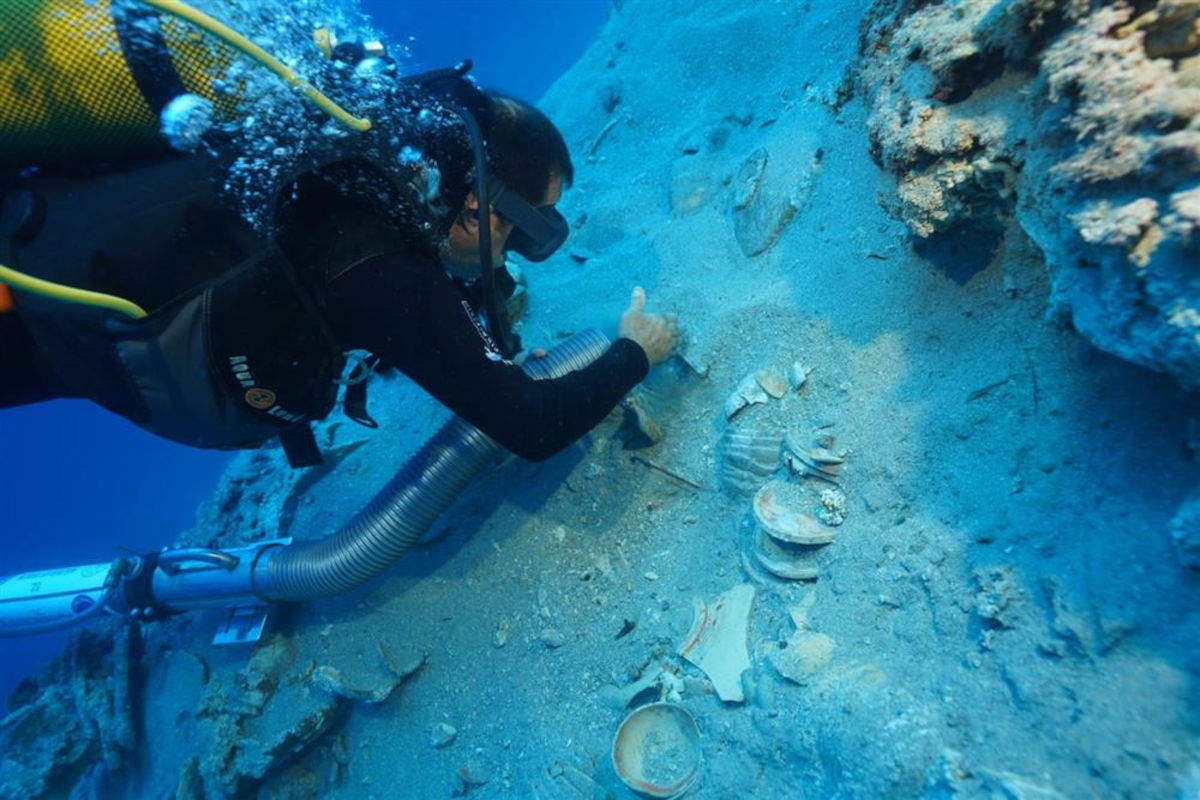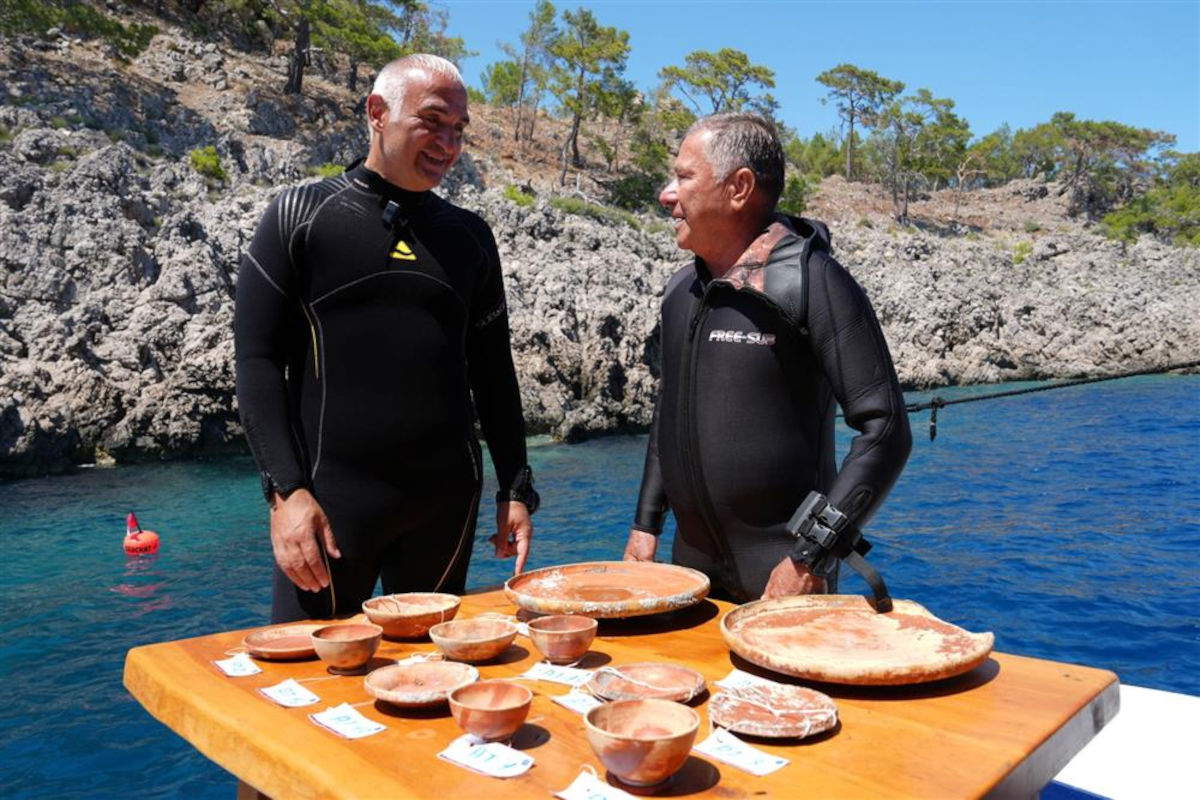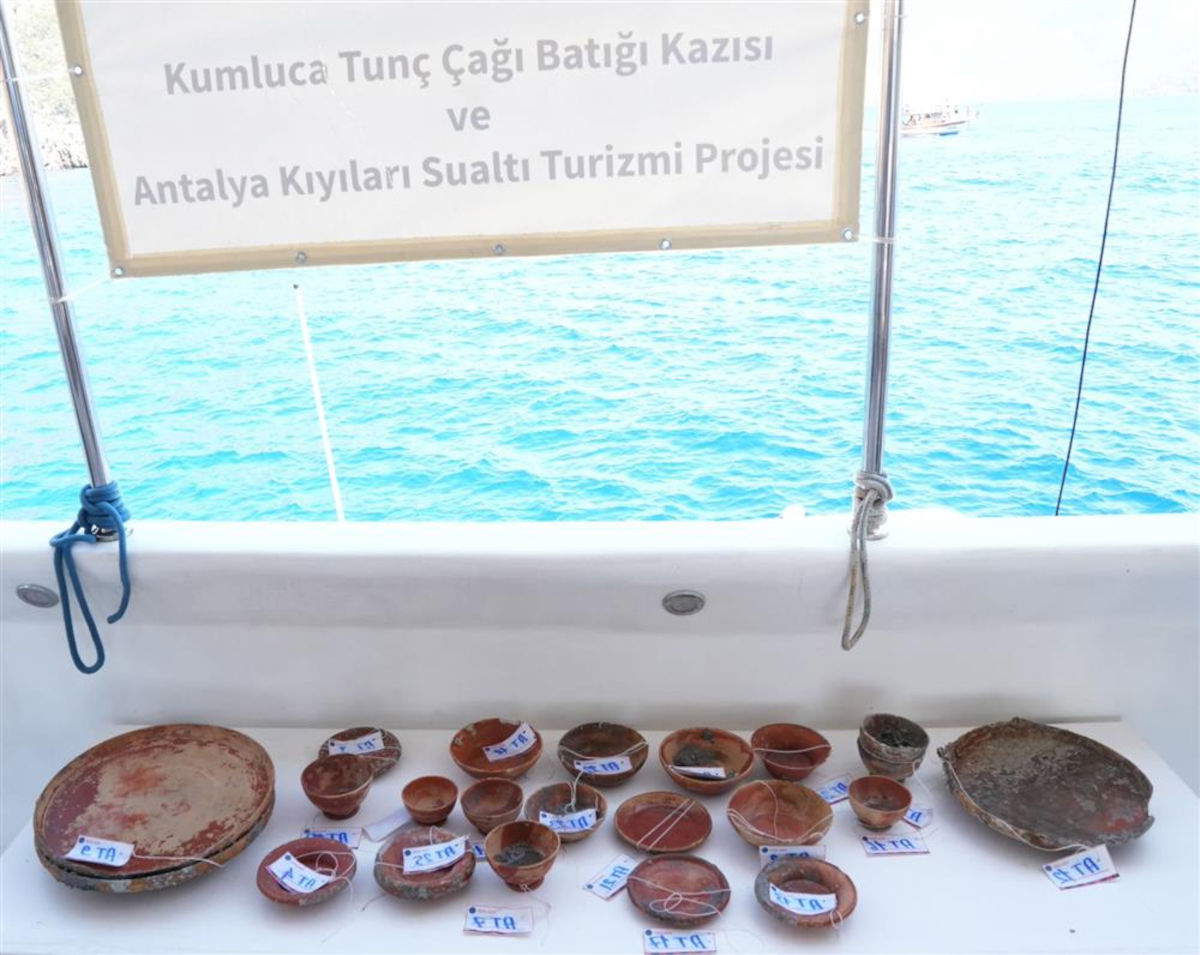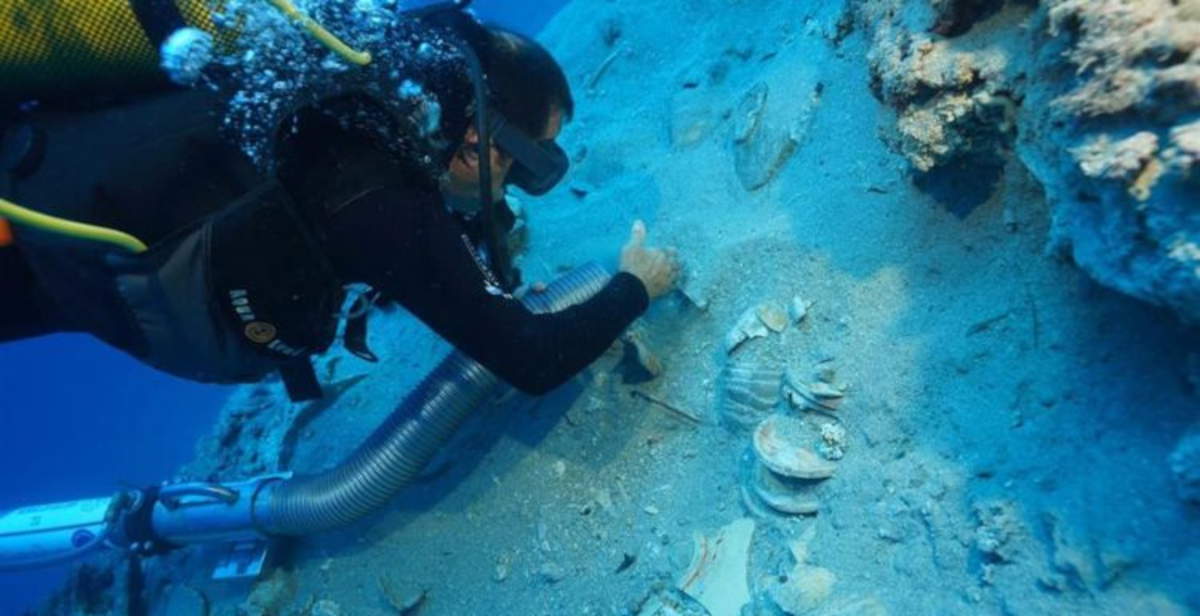The Mediterranean returns an archaeological discovery of international significance: a wreck from the Hellenistic-Roman era has been spotted off the coast of Adrasan, in the Kumluca district of Antalya province, Turkey, at a depth of 33 to 46 meters. The news immediately attracted the attention of the scientific community and Turkish authorities. The Minister of Culture and Tourism, Mehmet Nuri Ersoy, personally traveled to the dive site to review the progress of the underwater excavation, diving into the waters of the site himself.
The archaeological area emerged as a point of exceptional interest because of the quantity and state of preservation of the finds: hundreds of ceramics were unearthed in a context that, according to experts, finds no analogues in underwater archaeological literature. Minister Ersoy’s interest in the discovery resulted in a field visit, culminating in a documented dive, during which he was able to directly observe the extent of the wreck and its configuration on the seabed.

“At the point we have reached today, we are a country that not only follows but also gives direction with the scientific method and technology,” the minister said. “We have become the leader of underwater archaeology in the world. As of 2025, we have made studies in this field systematic and continuous with excavations by 4 presidents, excavations carried out under the presidency of 3 museums and 3 separate underwater researches. We aim to achieve a study equivalent to the archaeological studies carried out in the past sixty years with Legacy to the Future within four years. Excavations, which were previously carried out only at certain times and at a single point, can now be carried out at several points simultaneously spreading to twelve months of the year. This started a new leap in archaeology. Today, more than four hundred wrecks have been surveyed on the line stretching from Patara to Mersin alone. Our teachers are working very hard and in a disciplined way in these regions. These discoveries have great opportunities not only in terms of science, but also in terms of tourism. The plates, bowls have reached the present day preserving their original colors and surface features in an extraordinary way. These offer very valuable data in terms of both production techniques and packaging. These works are preserved with great care in our regional restoration and conservation laboratories. Each wreck is a new door to our past under the sea. Our institutions such as the Bodrum Underwater Archaeology Museum offer the products of these meticulous excavations to the public. Ceramic Wreck will also attract the attention of the archaeological world and visitors in the near future. The project process has been completed. Starting this month, the construction process begins. This museum will display Ceramic Wreck artifacts and similar underwater discoveries. We are planning an arrangement in the Antalya Archaeological Museum that will guide visitors by dividing a part to underwater archaeology. Diving tourism does not depend only on the summer season; qualified tourists with equipment continue to come to our country in the off-season. This provides a great advantage for a sustainable tourism model that has spread throughout the year. In addition, the non-accommodation expenses of these tourists are also quite high. The fusion of underwater archaeology and natural diving camps makes Turkey a center of attraction all over the world.”

The excavation, conducted under the scientific direction of associate Hakan Öniz, represents one of the most important underwater archaeological projects currently underway in Turkey. According to Öniz’s report, the area has a large number of sunken ceramic dishes and containers, but also rock masses that suggest a complex sinking dynamic. The find is not isolated: other accumulations of materials have reportedly already been identified in the vicinity, and it is expected that once excavation and documentation work is completed, part of the site will be opened to underwater tourism.
The site is located in an area of the Mediterranean particularly rich in trade during the Hellenistic and Roman periods. The typology and distribution of artifacts could offer new data on the maritime routes of antiquity, ceramic production, and economic exchanges between Asia Minor and other regions in the basin. According to archaeologists, the location of the wreck suggests that it was a transport ship, whose cargo consisted mainly of functional ceramics, probably intended for trade.

The Turkish minister’s direct participation in the dive himself is part of a diving training course that Ersoy launched in 2021. The minister trained at an advanced level under the guidance of the Turkish administrative representative of the International Association of Professional Dive Instructors (PADI), Asutay Akbayır. At the recent dive in Adrasan, he was also awarded the diving experience certificate, a recognition that he is technically prepared to participate in exploratory activities at a certain depth.
The Turkish government sees underwater archaeological heritage as a resource to be enhanced, both through support for research and the controlled opening of sites to the public. The idea is to complement protection activities with new models of sustainable use, capable of attracting visitors and stimulating international interest.
 |
| Underwater archaeological discovery in Turkey: even the minister dives to see the wreckage |
Warning: the translation into English of the original Italian article was created using automatic tools. We undertake to review all articles, but we do not guarantee the total absence of inaccuracies in the translation due to the program. You can find the original by clicking on the ITA button. If you find any mistake,please contact us.